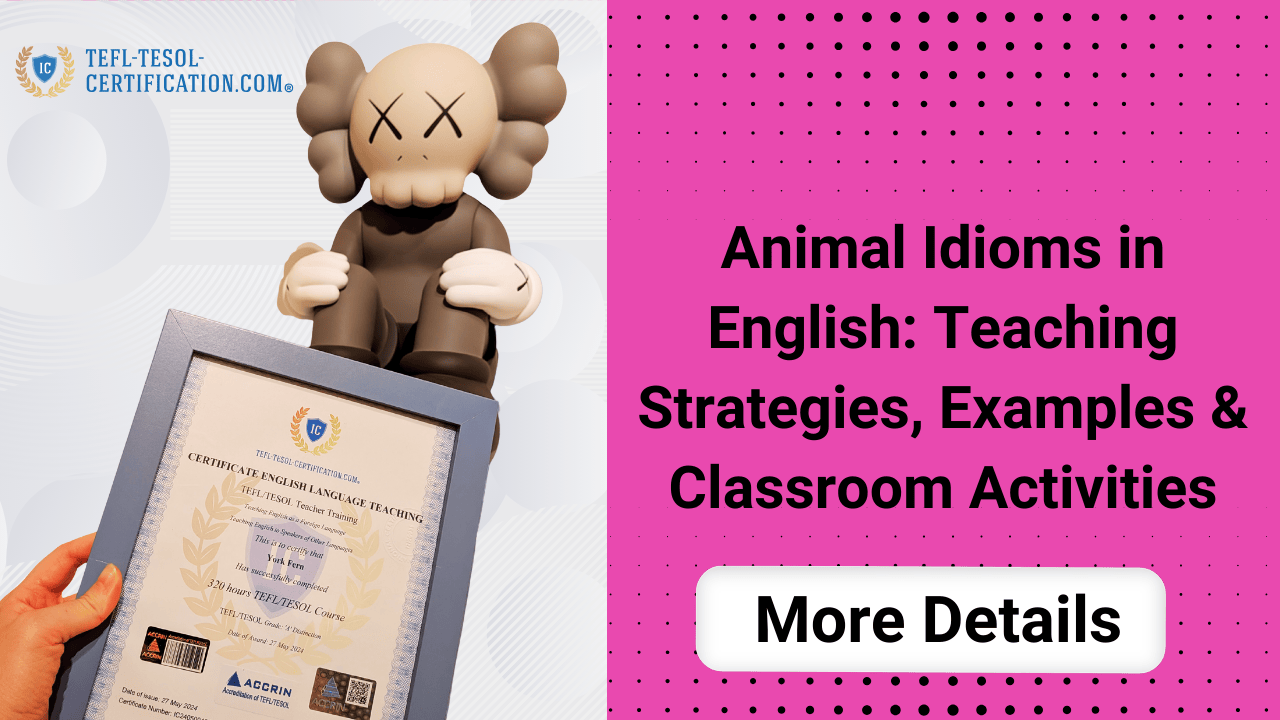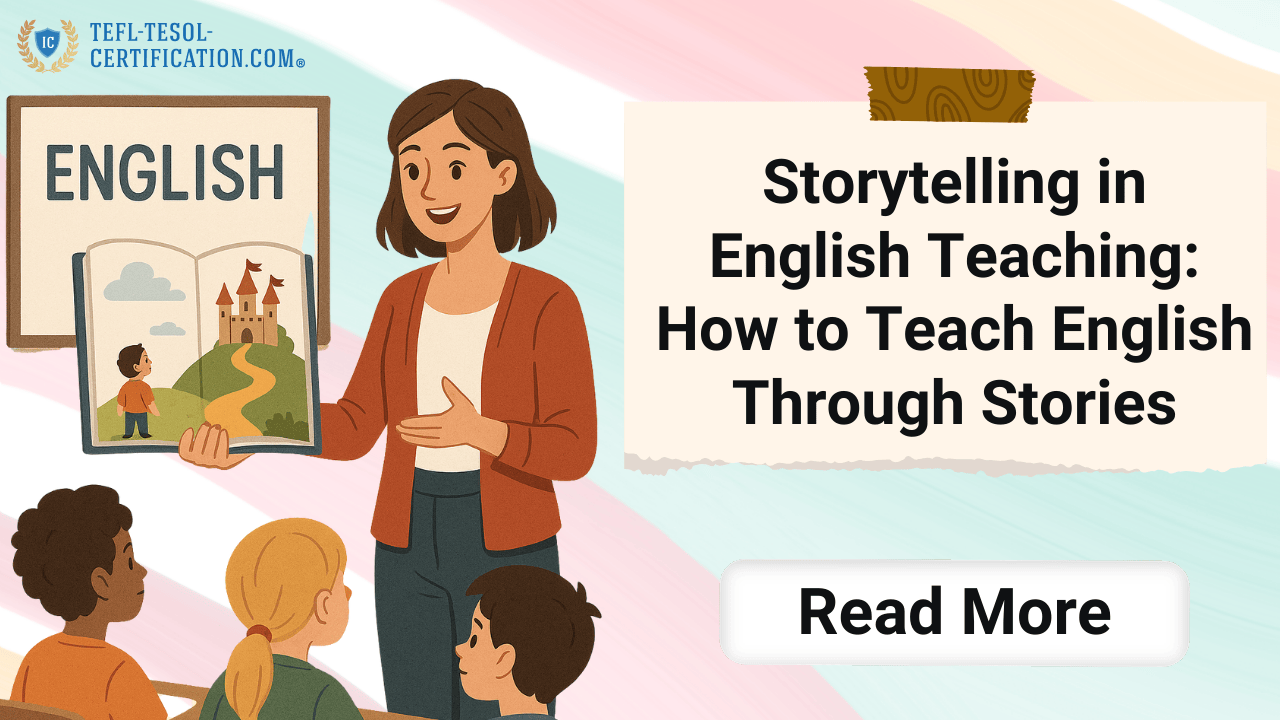🚀 More students, 💰 higher income, 🌍 complete freedom! ✅ 112 verified platforms with top rates ⏳ Flexible schedule – work whenever and as much as you want 🎯 Simple requirements – start earning right away 💎 Boost your career and income by teaching students worldwide!

Personal Branding for English Teachers: How to Build a Strong Online Presence
Table of contents
- Personal brand of an English teacher: what it really is
- Promoting yourself online as an English teacher: strategic foundations
- Personal branding for English teachers: a 90-day content system
- How to find students online: from first touch to paid lessons
- Monetisation for English teachers: income models and pricing
- Tools and setup: from TEFL/TESOL to simple analytics
- Personal brand in practice: one path and six quick wins
- Common mistakes that slow down your personal brand growth
- 30-day action plan for your English teacher brand
- FAQ about building a personal brand as an English teacher
- Your content “shop window”: what should be visible
- Ethics and sustainability: a brand that doesn’t burn you out
- Analytics without pain: what numbers to watch
- One case in three scenes: when a brand starts paying off
- Internal resources you can build as an English teacher
- Conclusion: start with one channel and one clear promise
The personal brand of an English teacher is not a logo or a clever username. It is a clear, consistent system of trust you build in the eyes of your students and colleagues. A strong personal brand helps you stand out from other English teachers, attract the right kind of learners, strengthen your professional reputation and build a more stable income. In simple terms, it’s how you show who you are as a specialist, what makes you different, what results you deliver and why people can rely on you. Your brand grows through clear positioning, high-quality teaching, consistent communication and visible proof of your students’ progress. In this article, you’ll find short, practical steps to build a strong, recognisable and sustainable personal brand as an English teacher.
Personal brand of an English teacher: what it really is
If we strip away the buzzwords, a personal brand is a promise plus proof. The promise might sound like: “With me, you’ll feel more confident speaking English in three months of focused practice.” The proof comes from real success stories, student testimonials, a clear methodology and regular, valuable content your audience can use.
Discipline plays a huge role. When a teacher has a clear niche, a consistent tone of voice, a simple value proposition and a system they follow, the chaos disappears. No more trying to “appeal to everyone” with random posts and offers. Instead, you build a solid foundation: you know who you teach, how you teach and what you help students achieve. Over time, this predictability turns into trust — and trust is the core of a strong personal brand.
What builds trust in your brand
- Positioning: who you teach and why (for example, busy adults at Intermediate level who need English for work and travel).
- Signals of competence: TEFL/TESOL certificates, visible student results, clear pricing and transparent offers.
- Visual and style consistency: photos and videos in a similar style, readable covers, natural human language instead of “perfect marketing speak”.
- Rhythm: minimal but stable posting — for example, every Tuesday and Friday.
- Community touchpoints: a club, newsletter, Q&A sessions or live streams where people can ask questions and interact with you.
Promoting yourself online as an English teacher: strategic foundations
Promotion is not about “being everywhere at once”. It’s about choosing the places where your ideal students already spend time and using them wisely. A simple way to think about it is as a three-layer funnel: attention, trust and conversion. Each layer has its own content formats, tempo and calls to action.
Channel map and main goals
| Channel | Primary goal | KPI |
| Blog / long-form articles | Cover search queries and showcase your expertise | Organic traffic, new subscribers |
| Short-form video | Deliver quick value in 30–60 seconds | Views, watch time, saves |
| Live lessons / webinars | Handle objections and connect via your voice and personality | Registrations, questions, follow-up bookings |
| Email newsletter | Retention, repeat enrolments and upsells | Open rate, click-throughs, bookings |
Content pillars that “sell without selling”
- Methodology: short breakdowns of activities, techniques and lesson ideas that teachers and learners can apply immediately.
- Student stories: real journeys, challenges and small wins, with clear takeaways.
- Error analysis: common mistakes in speaking, writing or pronunciation and simple ways to fix them.
- Behind the scenes: how you plan lessons, check homework, organise your schedule and recharge.
And importantly, no panic: one channel, one improvement per week. That’s how you grow without burning out.
Personal branding for English teachers: a 90-day content system
Let’s say it clearly: personal branding for English teachers is built through consistent content, not one viral post. A simple system: three content pillars × 12 weeks × cross-posting across your main channels. It’s not about posting for the sake of posting — it’s about having ongoing conversations with “your people”.
And start earning money 💸 by teaching English in your own country, abroad, or online from anywhere on the planet! 🎁 Gifts and bonuses: professional support from your personal coach 🧑🏫 and job placement assistant 💼.
Sample weekly posting schedule
- Monday: “mistake of the week” post plus a short explanation of how to fix it.
- Wednesday: micro-video with pronunciation or speaking practice.
- Friday: student story with a clear takeaway: “how to repeat this result”.
- Every 2 weeks: live Q&A session; collect questions in advance.
- Weekly: email to subscribers with a curated list of useful resources and your latest content.
Editorial calendar basics
- For each piece: topic → purpose → format → call to action → release date.
- Give every topic a “minimum value”: one concrete action readers or viewers can take immediately.
- Once a month, review your stats: what people saved and shared most often — that’s what you double down on.
How to find students online: from first touch to paid lessons
“How do I find students online?” is one of the most common questions teachers ask. The short answer: build a simple path of three steps — content → lead magnet → clarity call. After that, you convert the right people into lessons or a short programme.
What works well right now
- Lead magnet that solves one specific pain point, for example: a checklist “5 common mistakes in English job interviews”.
- Simple landing page with a clear promise, short description and a few relevant testimonials.
- Clarity or diagnostic session of 20–30 minutes: quick level check plus a four-week plan of progress.
- Lesson packages instead of one-off classes: this saves admin time and makes your income more predictable.
Monetisation for English teachers: income models and pricing
When we talk about monetisation for English teachers, the starting point is not a price list — it’s a clear promise of outcomes. Your prices simply anchor the value you have already demonstrated through your content, calls and teaching style.
Income models that work for many teachers
- 4–8–12 lesson packages: fixed lesson blocks with a clear goal (“confident for a job interview in one month”).
- Small groups (6–8 students): one topic, shared pace, group chat. You increase your hourly income while keeping your time under control.
- Teacher mastermind or mentoring: sharing best practices, co-creating materials, supporting each other’s growth.
- Mini-courses: focused skills like “English for IT meetings”, “answering tricky interview questions” or “clear pronunciation for business”.
How to approach your pricing
- Calculate the real cost of one teaching hour (preparation + lesson + feedback).
- Decide on your workload: aim for no more than 70% of your calendar being booked with lessons — protect 30% for brand building and development.
- Set a monthly income goal: “X students × average package price” and adjust your offers accordingly.
- Add a premium layer: a small number of VIP slots for deeper, personalised work.
Tools and setup: from TEFL/TESOL to simple analytics
In practice, international teaching qualifications can strengthen your brand and give you structure. A solid TEFL or TESOL programme helps you organise lessons, choose methods consciously and speak the same language as recruiters, schools and corporate clients.
💡 Unlock the secrets to doubling your teaching income with our exclusive checklist! 🎯 This checklist is designed for English teachers who want to 📈 attract more students and 🔥 keep them engaged for the long term.
Technical minimum for your personal teaching brand
- Homepage or simple landing page: who you are, what you help with, how you work and how to book.
- Booking calendar: an easy way for people to schedule clarity calls or trial lessons.
- Templates: for presentations, proposals, onboarding emails and feedback forms.
- Basic metrics: visits, enquiries, conversion to bookings and percentage of returning students.
Personal brand in practice: one path and six quick wins
Many teachers start with basic equipment and zero experience in content creation. What really moves the needle is not the perfect microphone — it is consistency. A month of small actions can already bring first results; after three months, you may start seeing a stable flow of enquiries.
- Optimise your Prole in one evening: one clear photo, one tagline, three bullet points explaining how you help.
- Record five short videos (40–60 seconds each): one technique, one example, one call to action.
- Launch a small newsletter to 20–30 people: past students, colleagues, friends who are interested in English.
- Run an open live session for 30 minutes focused on a specific topic, for example pronunciation diagnostics.
- Create a simple lead magnet and set up automatic delivery when people subscribe.
- Ask current students for referrals — in many cases, two out of five will bring you at least one new enquiry.
Simple actions beat perfect plans. Write, record, publish, refine. And leave gaps in your timetable — to rest, reflect and stay creative.
Common mistakes that slow down your personal brand growth
- Constantly switching topics and tone: one week you talk about children’s lessons, next week about legal English; your audience gets confused.
- Posting too rarely: a month of silence and the algorithm (and your audience) forget you.
- Over-safe messaging: “I help improve your English.” How exactly? For whom? In how much time?
- Only offering single lessons: no stability, no long-term planning for you or your students.
- Thinking instead of acting: “What if it’s not perfect?” Post it anyway and improve as you go.
30-day action plan for your English teacher brand
Week 1 — foundation
- Choose your niche (level, goals, format) and write one clear promise of results.
- Outline a simple landing page and set up a way to book clarity calls.
- Prepare three content topics and one lead magnet idea.
Week 2 — visibility
- Publish three posts and two short videos — the same idea in different formats.
- Start your newsletter: welcome email + useful tip + mini-survey.
- Run your first 30-minute live session with a focused topic.
Week 3 — trust
- Collect two mini case studies with screenshots, student quotes or audio “before/after”.
- Run a social poll: “What stops you from speaking?” and build content around answers.
- Test two price points or package structures and note the response.
Week 4 — conversion and growth
- Run six clarity calls and send each person a short progress plan.
- Address common objections openly in posts, emails and short videos.
- Offer a couple of “test drive” lessons to highly motivated leads.
FAQ about building a personal brand as an English teacher
Do I need to be on many platforms?
No. Start with one main platform (blog or social media) and one support channel (newsletter or community). Add more only after three months of consistent activity.
How much time should I spend weekly?
Plan for 4–6 hours: about 2 hours for planning, 2 for creating (writing or recording) and 1–2 for publishing and answering comments or emails — plus your teaching time, of course.
What if I’m scared to speak on camera?
Start with written content: posts and articles. Move on to audio (voice messages or podcast-style tips). Then record short videos where you show your screen and use voiceover. Confidence grows with practice, not before it.
- Rule 1: aim for 80% value, 20% “about you”. People feel this balance.
- Rule 2: repeat your key ideas in different formats so they really stick.
- Rule 3: don’t fight the algorithms — feed them with steady, realistic rhythm.
Your content “shop window”: what should be visible
Portfolio that opens doors
- 3–5 case studies with concrete results and short quotes.
- One programme overview page explaining topics, number of hours and expected outcomes.
- “About me” section that explains why you teach, what you believe in and how you work.
- Certificate block with TEFL/TESOL and a short explanation of what they mean.
Designing the first contact
- Pin a “Start here” post or page with three clear options: one-to-one, group course, mini-course.
- Add a visible button or link to book a clarity call with a transparent calendar.
- Offer a set of “quick links”: checklist, FAQ, case studies.
Ethics and sustainability: a brand that doesn’t burn you out
Healthy, sustainable branding is possible. Promise less, deliver more. Give people clarity during calls and consultations, even if they are not ready to become your students yet. Respect your own time and boundaries too.
- Honest promises: concrete timeframes and outcomes instead of magic “you’ll speak fluently in a week”.
- Clear policies: payment, cancellations, homework deadlines.
- Careful handling of student data: store recordings and work safely and respectfully.
- Energy management: plan rest as a non-negotiable part of your teaching schedule.
Analytics without pain: what numbers to watch
- Content reach: not for ego, but as an early signal of interest.
- Subscribers and leads: growth of your audience and quality of enquiries.
- Conversion to paid: percentage of clarity calls that turn into packages.
- Repeat business: how many students buy a second or third package.
Once a month, open your spreadsheet and look at the trends. If conversion drops, revisit your promise and messaging. Fine-tuning those usually brings the numbers back up.
One case in three scenes: when a brand starts paying off
Scene 1. Month 1. You record eight short videos and create one checklist. You feel nervous, but you publish anyway.
Scene 2. Month 2. You see new subscribers and a dozen enquiries for clarity calls. People say, “I’ve been watching your content; it really helped.”
Scene 3. Month 3. Several 8-lesson packages are booked, your first small group is full, and you’ve opened a simple community space. Your income is no longer a lottery — it’s a system.
- Lesson 1: rhythm beats talent.
- Lesson 2: specifics beat vague promises.
- Lesson 3: one well-maintained channel beats seven abandoned ones.
Internal resources you can build as an English teacher
- Invest time in at least one structured teacher training (for example a TEFL or TESOL course) to build a strong methodological base and save months of trial and error.
- Create your own “teaching handbook” with principles, favourite activities, assessment ideas and go-to materials.
- Develop a simple system for collecting feedback and success stories so your brand grows on real evidence, not just self-promotion.
Conclusion: start with one channel and one clear promise
Your personal brand as an English teacher is a habit of being useful and understandable to your audience. Choose one main channel and one clear promise, keep a realistic rhythm, collect feedback and improve step by step. If you support all this with solid teaching skills, reflective practice and healthy boundaries, your personal brand will work for you for years — bringing you motivated students, professional freedom and a more predictable income.
Terms used:
EFL, ESL, TEFL, TESOL

York Fern
An English instructor with 12+ years of experience. I work for an online school and travel the world, teaching students from various countries, leveraging my TEFL/TESOL certification. Seeing the world's oceans, mountains, and cities with my own eyes has given me a profound appreciation for the importance of quality education and international communication.
and start earning by teaching English in your country, abroad, or online from anywhere in the world! Order the course with a 50% discount 💸 and receive as a gift the support of a personal coach 👨🏫 and job placement assistant! 🎁🚀 Hurry, limited spots available! 🏃♂️💨
💡 Unlock the secrets to doubling your teaching income with our exclusive checklist! 🎯 This checklist is designed for English teachers who want to 📈 attract more students and 🔥 keep them engaged for the long term.
🚀 More students, 💰 higher income, 🌍 complete freedom! ✅ 112 verified platforms with top rates ⏳ Flexible schedule – work whenever and as much as you want 🎯 Simple requirements – start earning right away 💎 Boost your career and income by teaching students worldwide!
choose us?



